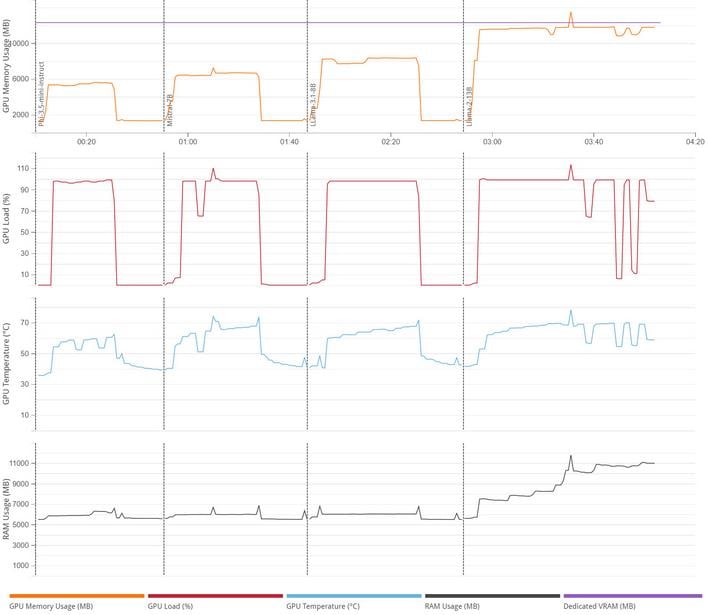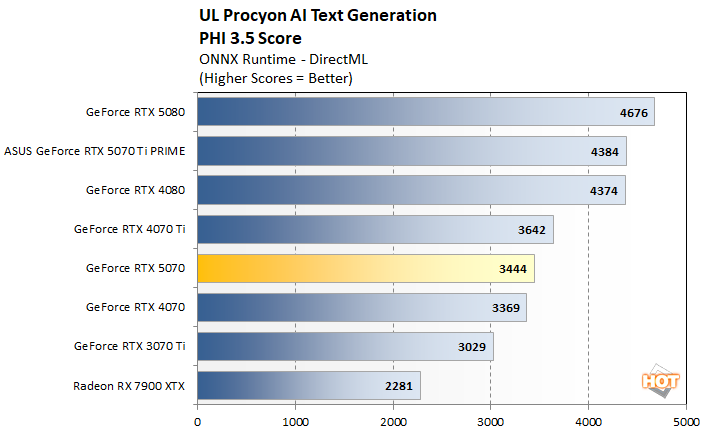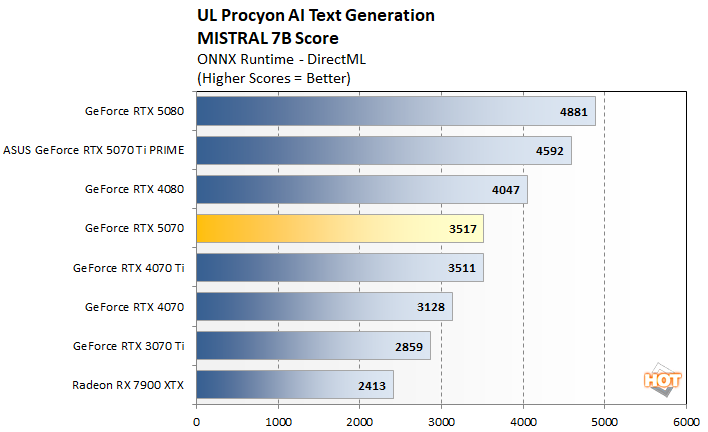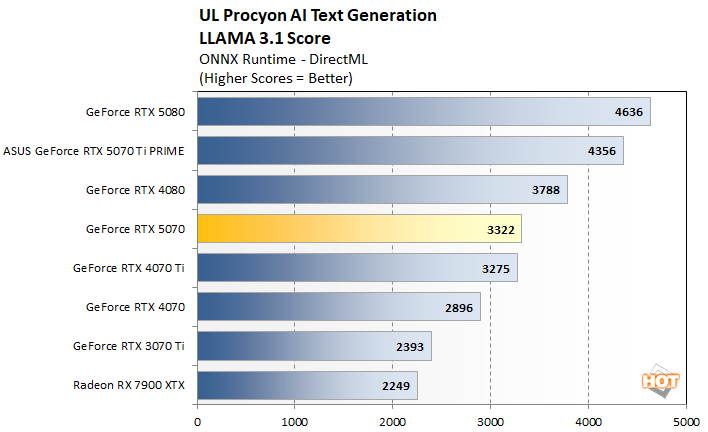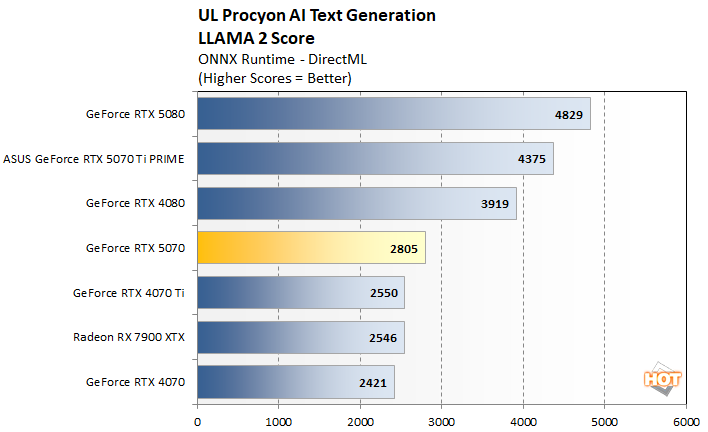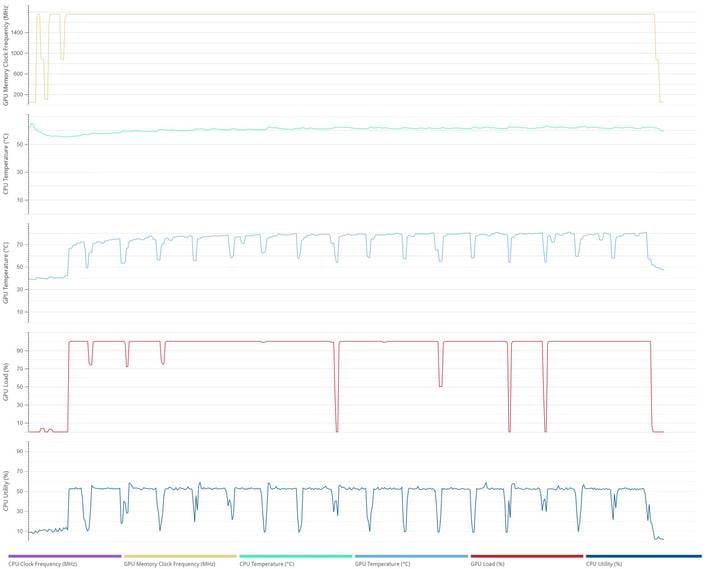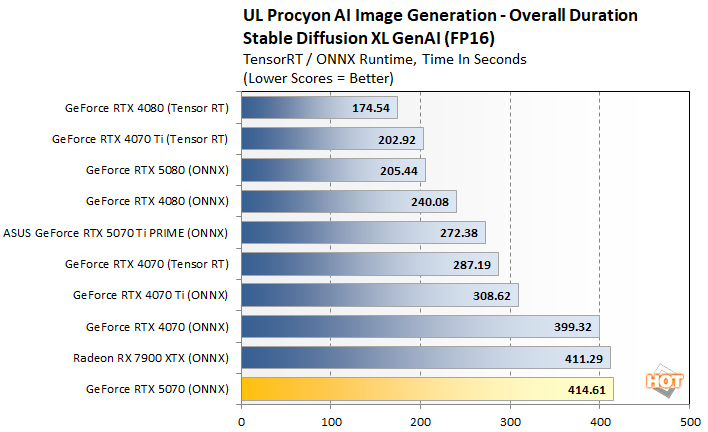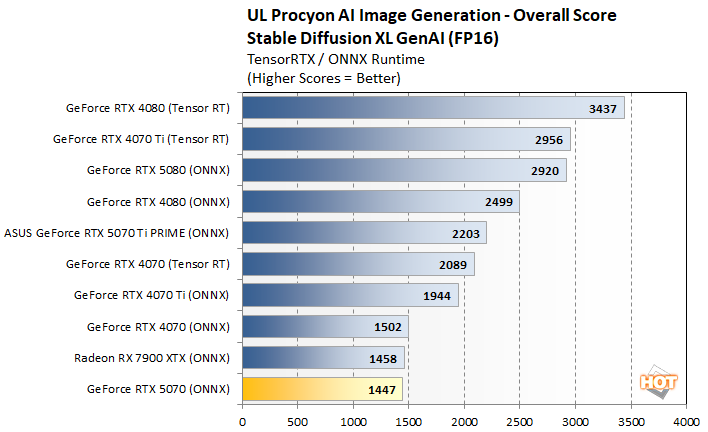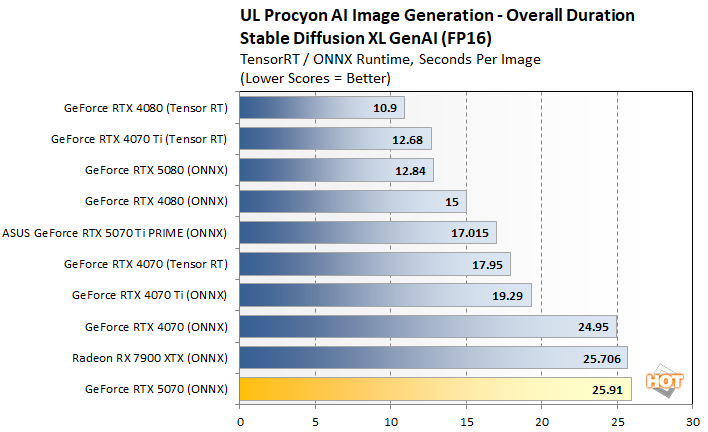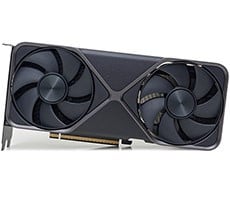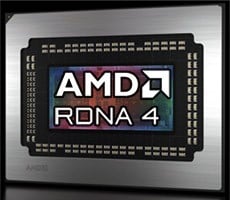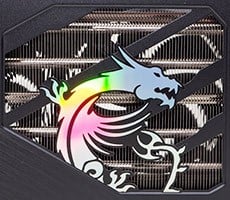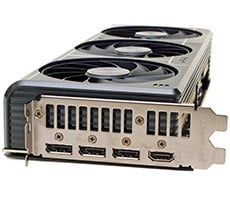GeForce RTX 5070 FE Review: NVIDIA’s More Affordable Blackwell Tested
Our Test System Configuration:
| Hardware Used: AMD Ryzen 7 9800X3D (4.7GHz - 5.2GHz, 8-Core) MSI X870E Carbon WiFi 32GB G.SKILL DDR5-6000 Samsung SSD 990 Integrated Audio / Network Radeon RX 7900 XT GeForce RTX 3070 Ti GeForce RTX 4070 GeForce RTX 4070 Ti GeForce RTX 4080 GeForce RTX 4090 GeForce RTX 5080 Relevant Software: Windows 11 Pro 24H2 AMD Radeon v24.12.1 NVIDIA Drivers v571.86 / v572.50 |
Benchmarks Used: MLPerf Client Geekbench AI Procyon AI Text Generation Procyon AI Stable Diffusion XL Blender v4.3 Blackmagic RAW Speed Test v4.3.1 V-Ray UL 3DMark UL VRMark Unigine Superposition Games Tested: Assassin's Creed Mirage Black Myth Wukon Homeworld 3 Horizon Zero Dawn Remastered Cyberpunk 2077 (press beta) The Talos Principle II F1 24 |
MLPerf Client Benchmarks
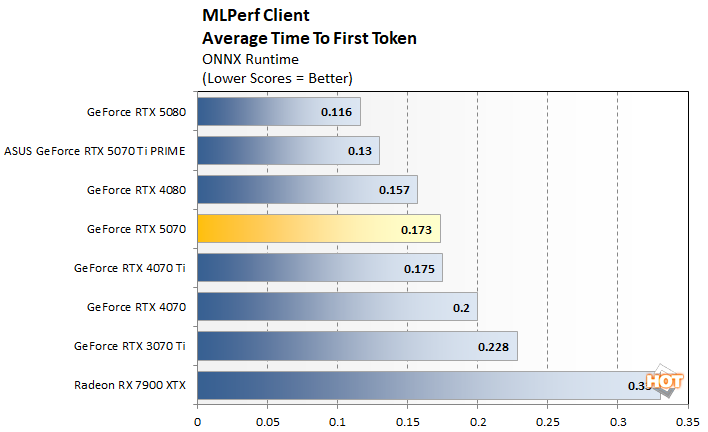
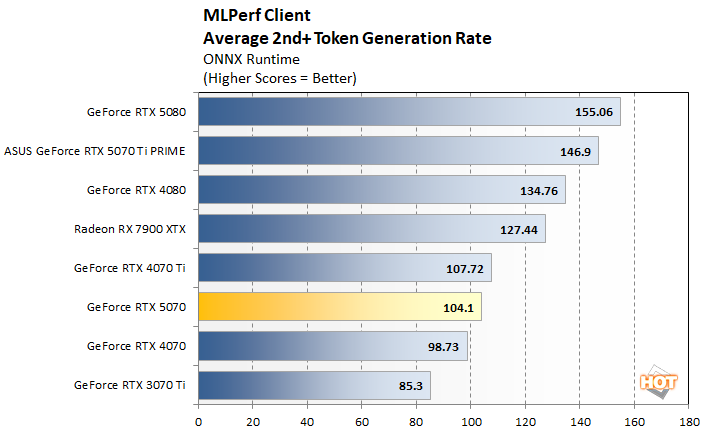
Geekbench AI Testing
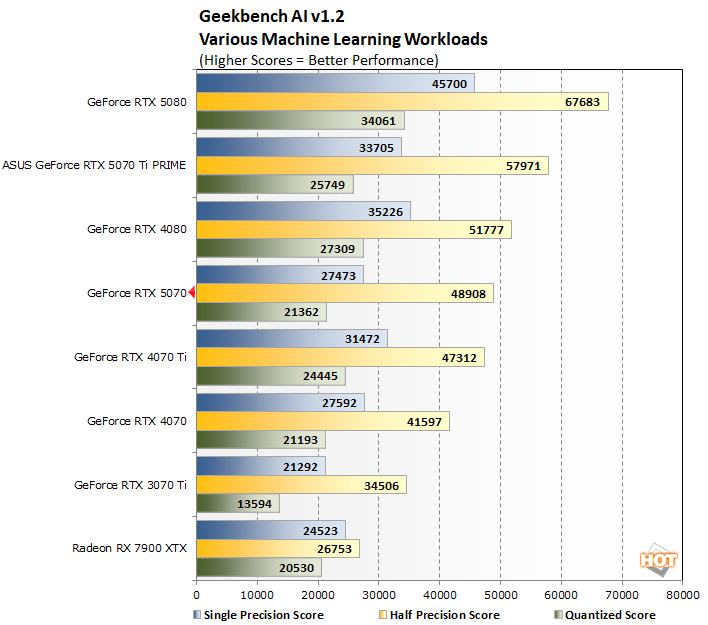
The GeForce RTX 5070 and RTX 4070 Ti trade blows in the GeekBench AI tests as well. The GeForce RTX 5070 offered a higher half precision score, but the RTX 4070 Ti had the better single precision and quantized scores. The GeForce RTX 4070 was also competitive with the RTX 5070 in the single precision and quantized test, but trailed significantly in the half precision test.
UL Procyon AI Text Generation Benchmarks
Once again we see the GeForce RTX 5070 trading blows with the GeForce RTX 4070 Ti across all four of the models used in this benchmark. The GeForce RTX 5070 is typically a notch ahead of the vanilla RTX 4070, but can't always overtake the higher-end GeForce RTX 4070 Ti.
UL Procying Stable Diffusion XL AI Image Generation
The GeForce RTX 5070 FE technically lands at the bottom of the stack here, but that's only because this benchmark hasn't been updated with proper Tensor RT support for NVIDIA's Blackwell-based GPUs. If you look at the uplift Tensor RT provides for RTX 40-series GPU, it's safe to assume the RTX 50 series cards would see a similar boost, which would put the GeForce RTX 5070 FE somewhere between the RTX 4070 and 4070 Ti.
Blender v4.3 GPU Rendering Benchmarks
Blender is a free and open source 3D creation suite that can handle everything from modeling, rigging, and animation, through simulation, rendering, compositing, motion tracking, and even video editing or game creation. The developers offer a standalone benchmark tool that will track performance while rendering a handful of models. We used all three of the default models for these tests...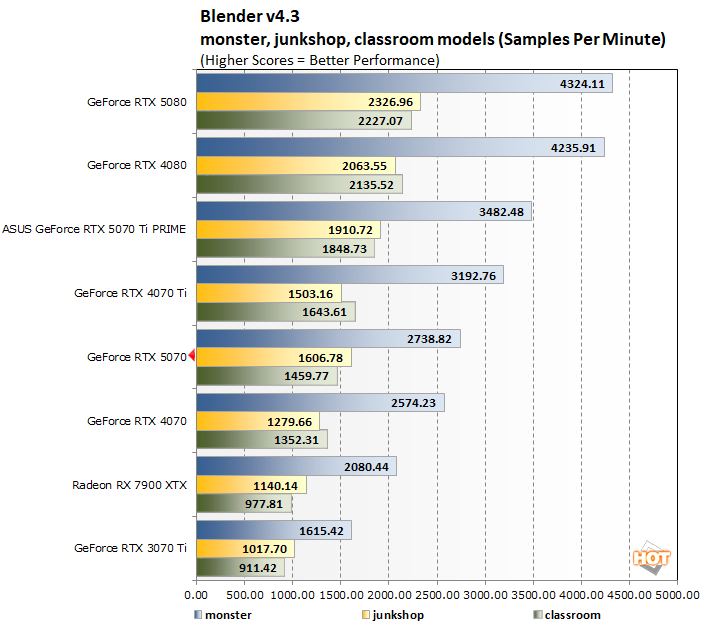
In what is becoming a theme so far, the GeForce RTX 5070 FE and RTX 4070 Ti trade blows yet again, depending on the scene being rendered. The GeForce RTX 5070 FE, however, has no trouble outpacing the Radeon RX 7900 XTX or GeForce RTX 4070.
V-Ray Rendering
The V-Ray Benchmark is a free tool that measures rendering performance on CPUs, NVIDIA GPUs, or a combination of both. The GPU benchmark in particular features a complex scene designed to evaluate the capabilities of both the RTX and CUDA-based V-Ray 6 render engines.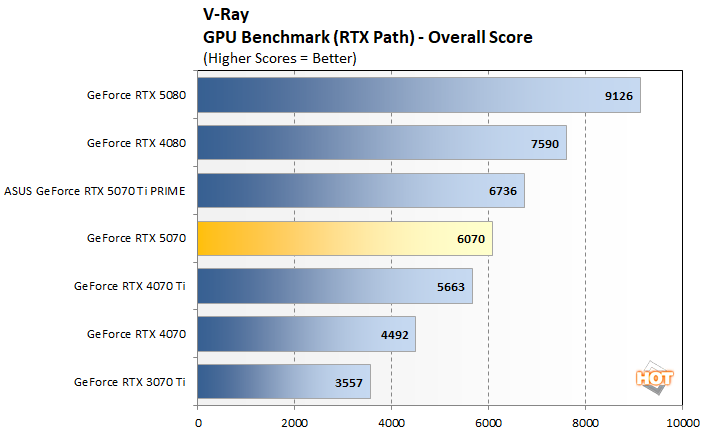
We tested V-Ray using the higher-performing RTX render engine, which leverages the RT cores in NVIDIA GPUs, which meams no support for Radeons here. For rendering workloads that can leverage RT cores, Blackwell provides a nice uplift in performance with the GeForce RTX 5070 FE clearly outrunning the GeForce RTX 4070 Ti.
Blackmagic RAW Speed Test Results
The Blackmagic RAW Speed Test is a CPU and GPU benchmarking tool that determines the speed of decoding full-resolution Blackmagic RAW video frames. The tool can be used to evaluate performance at various resolutions and bitrates on the CPU or using OpenCL or CUDA on a GPU. We're reporting four results here, at 8K and 4K resolutions, but at differing bitrates and compression levels.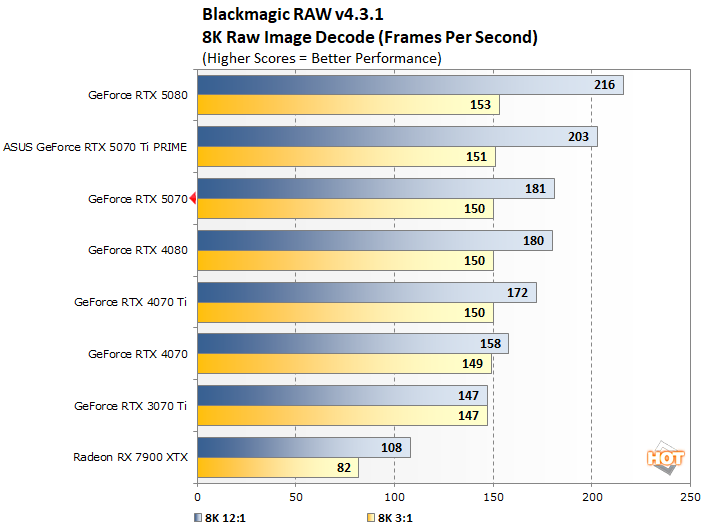
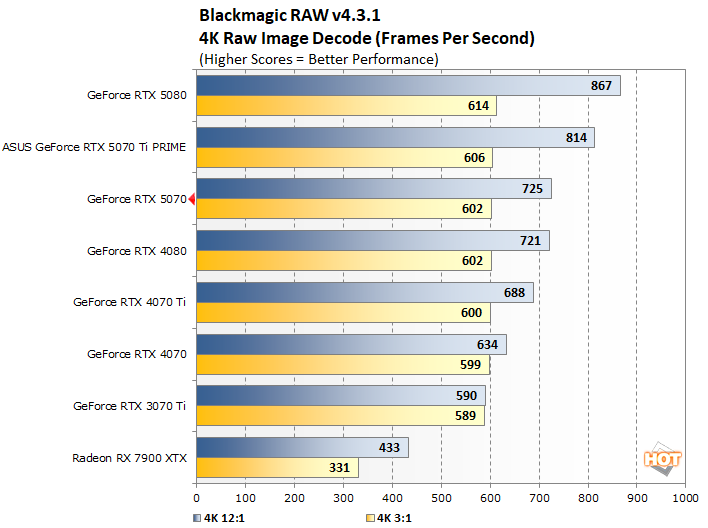
At both resolutions and compression levels, the Blackwell-based RTX 50 series GPUs lead the pack here, with the GeForce RTX 5070 FE landing just behind the higher-end GeForce RTX 5070 Ti. Now that we've seen the entirety of the first wave of GeForce RTX 50 series GPUs, it's fair to say they are nice step up for content creators.

